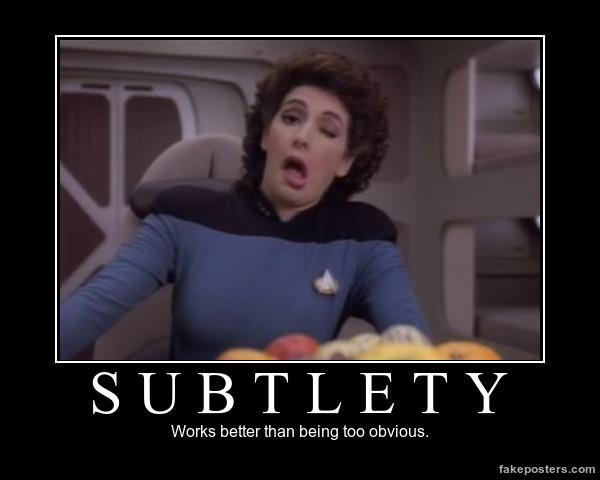I hate conflict. Okay, arguments can be constructive, I’ll give them that. I hate it when they turn nasty. And I really hate fighting. I’ve seen it and it sickens me. Yet conflict, confrontation and fighting are staple tools in storytelling.
So what happens when you’re a passive, a person who tries to avoid conflict, but you know you have to write it, to face it so you can tell a good story? There are five things you can do to overcome your fear of writing conflict:
1) Don’t be afraid of yourself
If you’re really honest about it, it’s emotionally painful to feel what your characters feel and most of us don’t like experiencing the dark side of ourselves. Writing coaches, like Donald Maass, ask questions that force you to dig deep into your own psyche and then they ask you to apply that to your character. It can be freaky and unnerving but it’s definitely worth it. When I do this, I’m always aware that I’m doing this to extrapolate information, and that fiction is fiction and not real life.
2) Don’t be afraid of your readers
We’re all told “write what you know”. Does that mean that if we write about a cruel character that we’re cruel people? Or, that if we write about a weird aunt in conflict that we’re making a statement about a relative? Certainly not, although you may hear “so that’s what you think of me!”
“Write what you know” doesn’t mean having personal experience on the matter or that a character is a direct reflection of someone we know (although it could be). It means that we do our research well so that we don’t resort to stereotypes. Just think, if we had to write by that rule, then there wouldn’t be any historically based fiction. This adage can also get you into trouble. A writer friend confided that she understands parental conflict when it comes to a males but not females. She had a great relationship with her mother and fought with her step-father. Hence, she has to take great care to ensure that all her stories aren’t about females in conflict with males and that females in conflict appear genuine.
3) Know that it’s okay to cause trouble
Throw out the socialization, normalization rules you’ve learned. It’s okay to be mean and it’s necessary to cause trouble, get people (your characters) into trouble. It’s important for your characters to feel pain, experience anguish, fight hard for what they want. As readers, we want someone to cheer for, a way to safely experience conflict, and experience the catharsis of conflict overcome. Readers want that and as writers, it’s our responsibility to provide that. The greatest gift I received when I started writing was permission to be cruel to my characters.
4) Overcome your lack of experience with conflict
You’re a nice person and have avoided conflict all your life. What does it look like? What is it like? How does a person in conflict feel? Why would they react that way instead of hiding? The trouble is, that when we don’t understand conflict or the ramifications of being in conflict, it’s too easy to fall into stereotype cliché’s about a situation.
Avoid the stereotypes by realizing that conflict arises from different people wanting different things, and doing things differently. People are NEVER in perfect agreement. Know your characters well enough (their history, perspective and motivation) to take on their persona . Know how they’d respond in certain situations and why. Research the effects of stressful situations on the body and people’s reactions, research martial arts, fighting, war and its effects on people. Talk to people – other writers, people with direct experience, or experts. Read historical accounts, biographies, blogs and forums where people discuss their situation. Understand how life stages affect goals, motivations and responsibilities. For example, parents may perceive potential harm if a teen goes to a party whereas the teen may be oblivious to that and desperately wants wo be with her friends. Research will help you get a feel for the issues and how people have reacted in similar circumstances.
5) Know why you’re telling the story
There must be a reason for telling the story. The character must be overcoming something for some reason, otherwise, there isn’t a story only a vignette. If you have an audience for vignettes without conflict, that’s great because not everyone likes conflict. Otherwise, give your character a chance to learn and grow, to fight for something important. Conflict is about overcoming a problem. It’s not about taking the easy way out which can be done in one paragraph. Are you going to dash through the poison ivy or leisurely walk around it?
Conflict is a part of story structure. Who is the protagonist? What does he want? What is he willing to do to overcome the obstacles to get what he wants? What are the consequences of his actions because not everyone wants him to get what he wants? What is he willing to do? What will he actually do? Is he doing the right thing for himself or for other people? Doing the right thing is very hard to do.
We all strive for happy, peaceful, fulfilling lives yet we all experience conflict every day whether it be with a stranger, a loved one, a friend, or if we are troubled by something. How do we get through conflict? How can we write our character through it? Motivation. Your character, just like you in real life, has to be motivated to stand up for what’s right, to fight for the goal, to change his world so he can become who he wants to be and to live the life he wants. Writers are motivated to write the story, to overcome the internal and external conflicts and challenges we face in order to tell a tale. We must give our characters the same opportunity to face the challenges, to live their story so they can experience and overcome the conflicts no matter how big or small they are.
Now that I understand the role of conflict in story, I look forward to creating the situations and seeing how characters handle them. Doing the research, delving deeper, thinking it through – I love that process and the resultant richness it adds to the story. Conflict is its own character with its own personality, twists and depth.
The best way to write conflict when you’re afraid of it is to throw yourself into its path and find a creative way out of the situation. After all, that’s what we make our characters do!
Happy writing.



 Evan Braun is an author and editor who has been writing books for the last two decades. He is the author of The Watchers Chronicle, whose third volume, The Law of Radiance, is forthcoming this spring. He specializes in hard science fiction and lives in the vicinity of Winnipeg, Manitoba.
Evan Braun is an author and editor who has been writing books for the last two decades. He is the author of The Watchers Chronicle, whose third volume, The Law of Radiance, is forthcoming this spring. He specializes in hard science fiction and lives in the vicinity of Winnipeg, Manitoba.